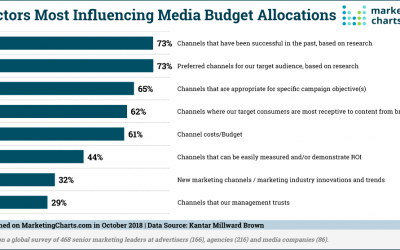You may have heard the myth that half of all businesses fail within the first year, and only 5% make it through four years. According to recent figures from the Small Business Administration, a government agency created to help small businesses start and...
WOWO Fort Wayne Radio Advertising with Scott Howard
How To Decide Where To Advertise in 2019
Despite all the talk about the internet and digital media being the place to be with your advertising, it's not time to dump traditional media. That's a one line summary of a report issued recently that summarizes where the advertisers and advertising...
The Advertising Secret You Don’t Know About
The advertising secret that you don't know about is... Well, should I tell you or should I keep it a secret? If I tell you, it could disrupt your entire marketing strategy. It might initially cause panic attacks, but pretty soon it will help you sleep...
Why Radio is Personal To Me
Are you one of those people who wonder if advertising on the radio would work for your business?I've got something for you to watch, or at least listen to for 5 minutes in a moment.Last year I turned 59 and listening to the radio has been part of my life...
Radio Advertising is Still A Great Deal in 2019
At the end of last year, I saw a few reports on the state of media and marketing for 2019 and want to share some insight from others again. Because, I can tell you plenty about the success of WOWO advertisers, but how about what others are using radio and...
Seconds Matter
Since the beginning of time, it’s been known that you only have one opportunity to make a good first impression. The debate is …. how long do you have to make that impression? Studies vary, but if you are applying for a job, a story in Psychological...
How Realistic Are Your Expectations?
Today I am am going to challenge your thinking about advertising and marketing. We are going to talk about the expectations you have for your advertising and marketing. It comes in different forms, depending on the lingo and verbage you use, but it comes down to one...
What’s Old Is New Again: Radio Listening
Over the recent Christmas and New Year's holiday break, I was catching up on unread emails from 2018 and found this gem pertaining to trends for 2019 and beyond that says that radio listenership will be going up in the years ahead. Deloitte...
Sound ADvice on Radio Advertising Success
To kick off the brand new year, I am going to share with you stories of success that business owners from around the country shared last year. These are their stories of how they grew their profits using radio advertising to invite customers to their...









